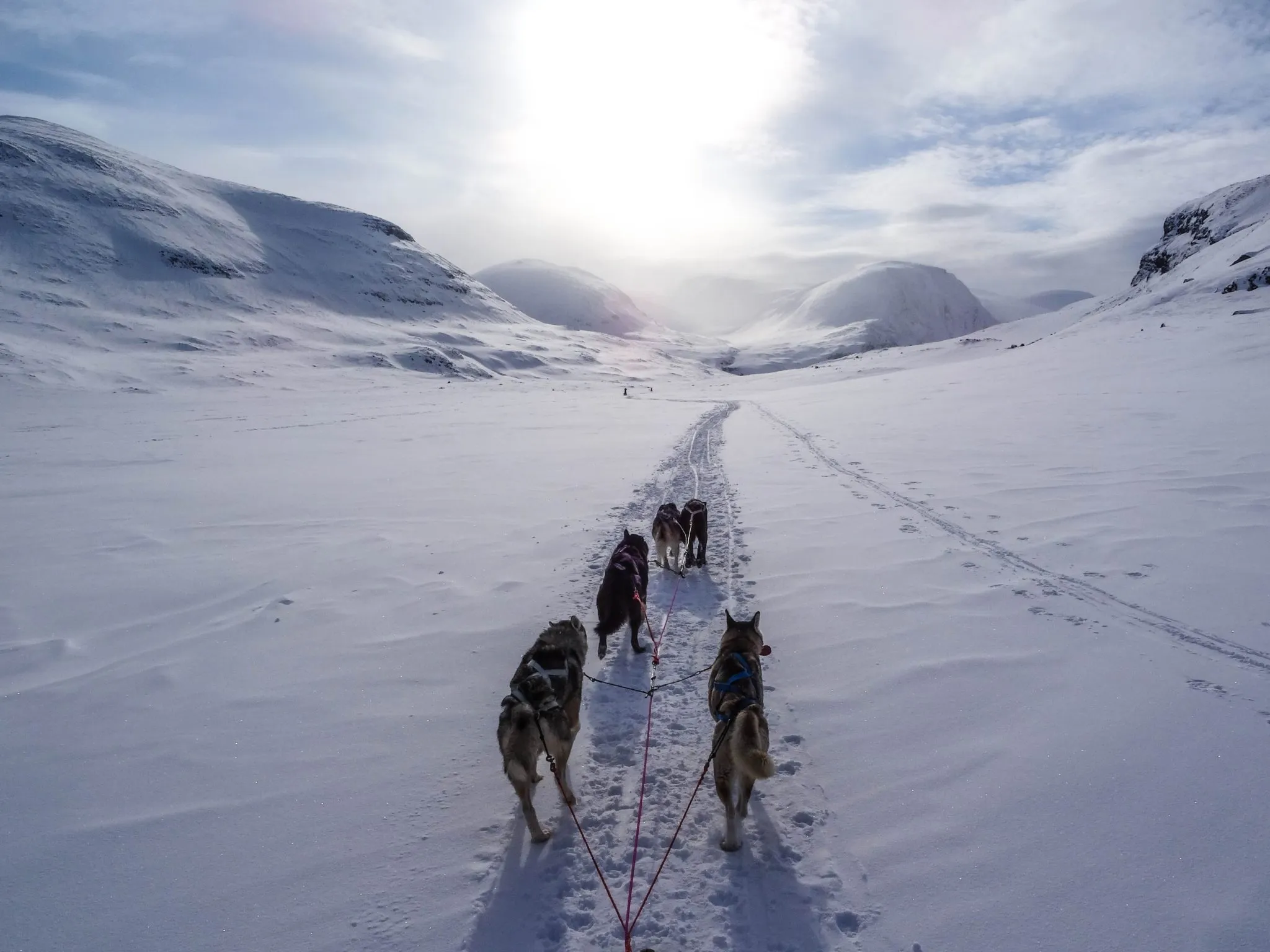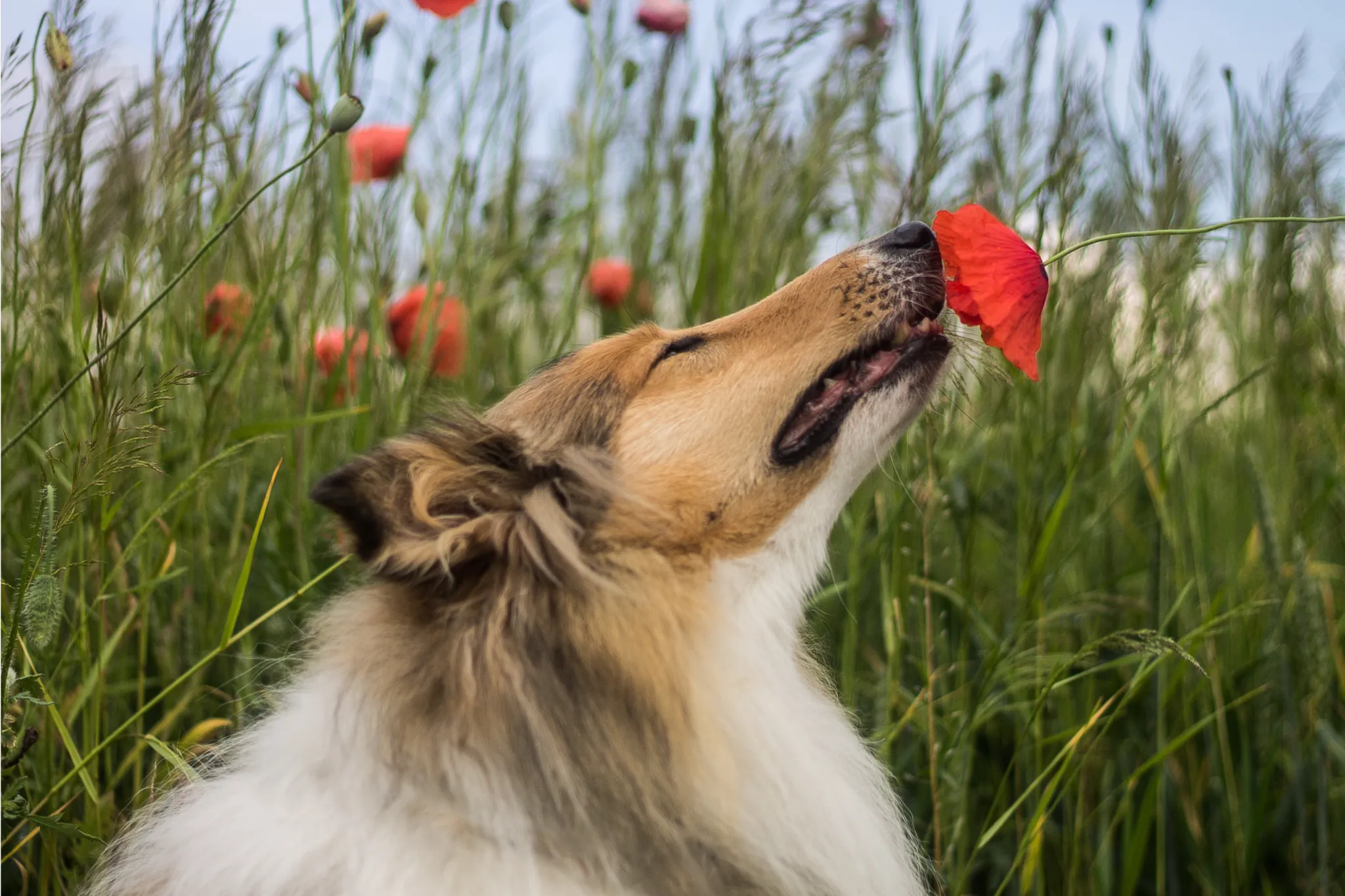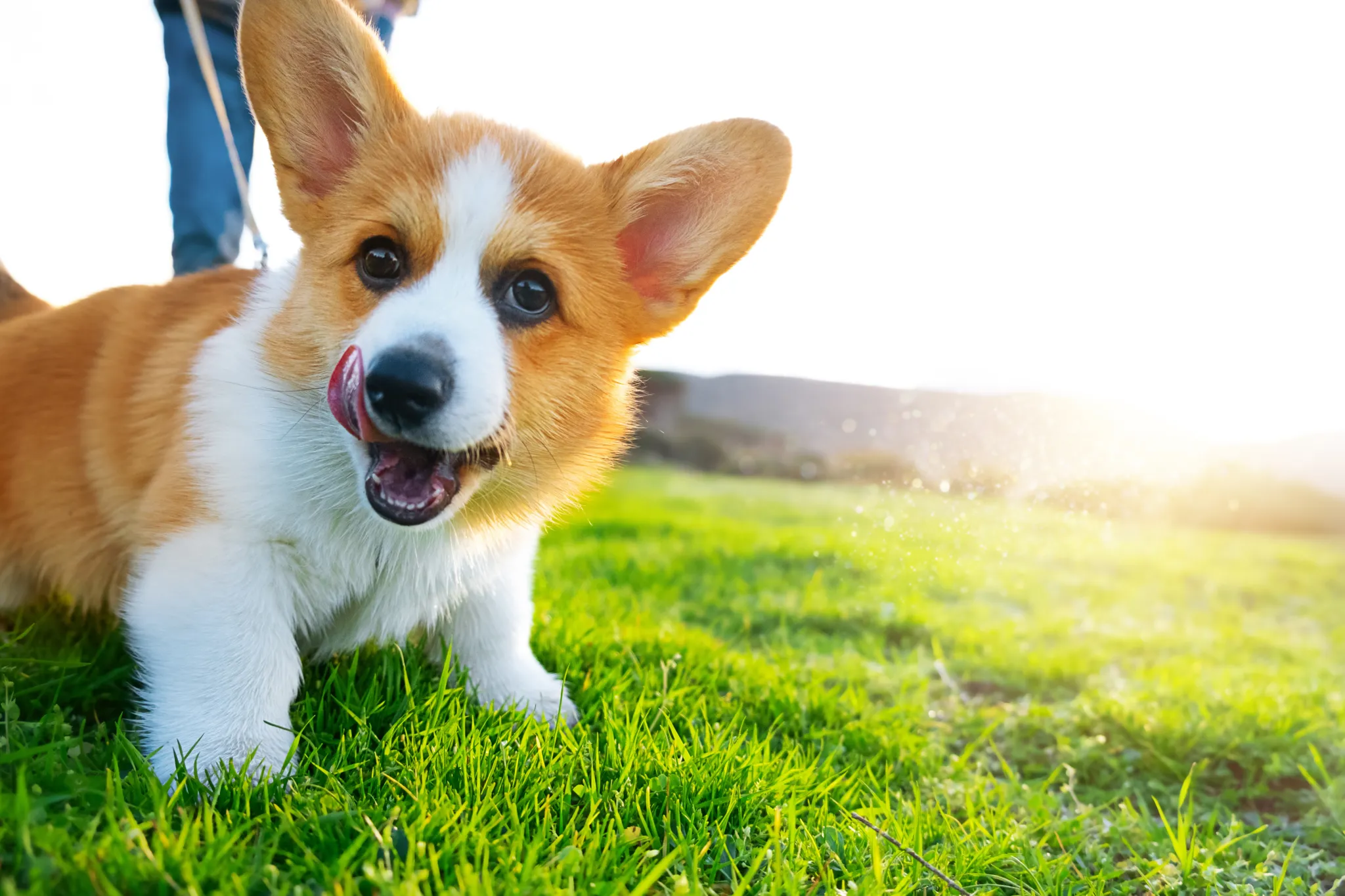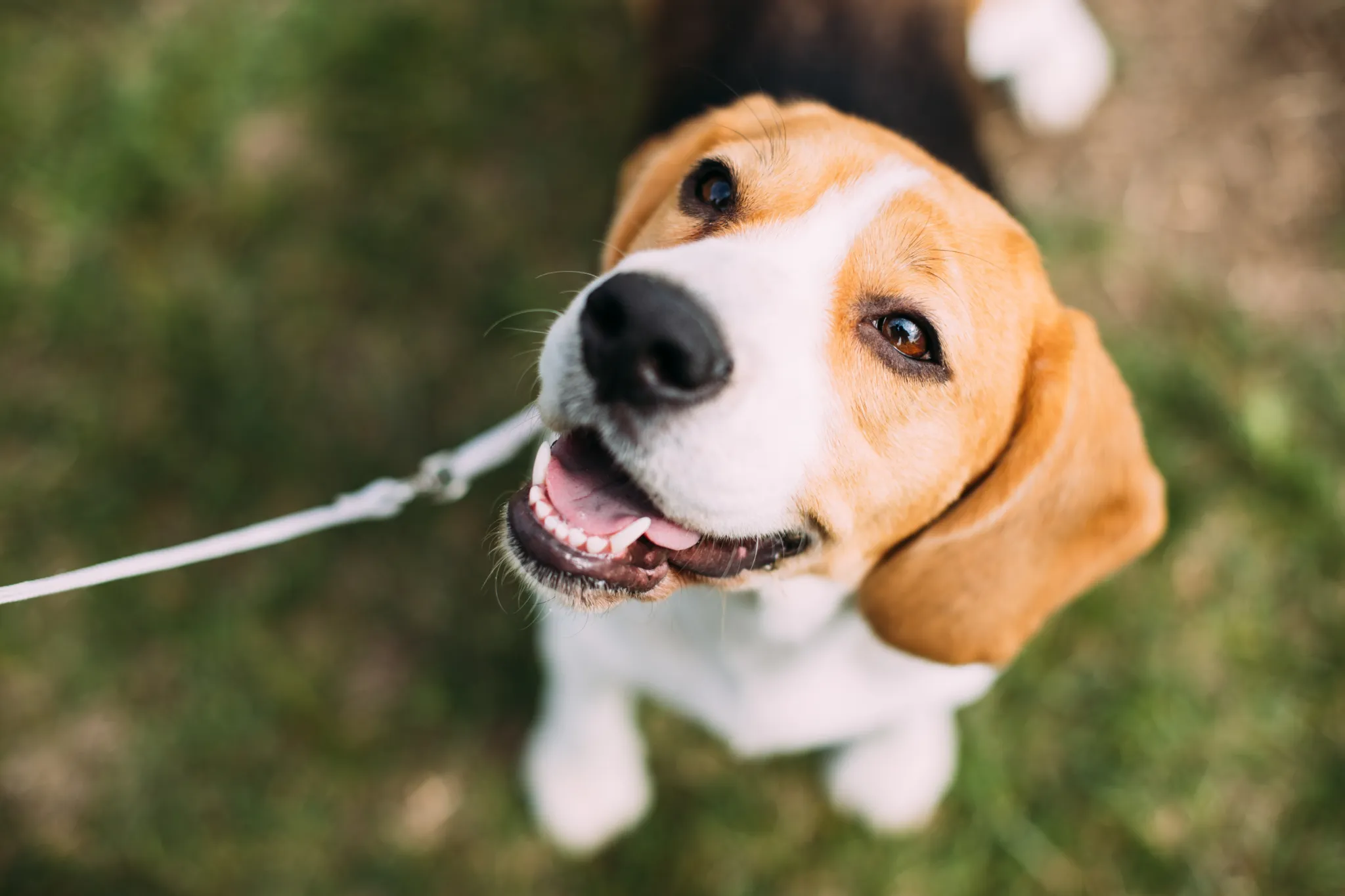One of the greatest joys of dog ownership is the shared experience of a walk. Yet, this pleasure can quickly diminish when your furry friend transforms into a determined sled dog, pulling you relentlessly down the street. If your daily strolls feel more like a tug-of-war than a leisurely outing, it’s time to teach your dog proper loose leash walking skills. You can absolutely teach a dog not to pull and make walks enjoyable for both of you.
 Sled dogs pulling on leash with effort
Sled dogs pulling on leash with effort
Teaching your dog not to pull on the lead is often one of the most challenging behaviors to instill, precisely because dogs aren’t born with an innate understanding of polite leash manners. It’s also one of the most common requests I receive as a trainer, and I completely empathize; being constantly pulled is incredibly frustrating!
Walking your dog should be a relaxing and bonding experience, but that becomes impossible when you’re being dragged along. The good news is that with patience and the right positive reinforcement techniques, every dog can learn to be an enjoyable walking partner. You can effectively teach your dog not to pull on the lead using positive, humane methods only, avoiding aversive tools like choke chains or shock collars. If you wouldn’t use something on a toddler, it shouldn’t be used on your dog.
Many misconceptions exist, such as the idea that a dog pulls to show dominance or control. These beliefs are entirely incorrect. Pulling simply means your dog hasn’t been taught polite boundaries and is currently more captivated by the environment than by you. This is a normal canine behavior; it’s our responsibility to guide them and teach them what we expect during walks.
Unfortunately, these misunderstandings have led many owners to believe their dogs are “being bad” when they pull, resulting in a lack of patience and even punishment during loose leash training. As a positive trainer, I advocate for humane and effective methods, assuring you that you can 100% get your dog to walk nicely using only positive training. This guide aims to be a comprehensive resource, covering everything you need to know to transform your walks into pleasant outings.
Why Dogs Pull on Leash (and Why It’s Not Dominance)
Contrary to popular belief, your dog pulling on the leash has nothing to do with dominance, control, or them intentionally being difficult. The real reasons are much simpler and more understandable:
1. Insufficient Exercise
Most dogs, especially depending on their breed, aren’t sufficiently exercised. Their daily 30-minute walk might be their only chance to burn energy, which often isn’t enough. It’s unrealistic to expect a dog to walk calmly beside you if they have a significant amount of pent-up energy. To set your dog up for success, ensure they are adequately tired before embarking on loose leash training. This could involve off-leash play, chasing a ball or frisbee, or a trip to a dog park. If your time is limited, consider hiring a dog walker or utilizing doggy daycare services. Meeting your dog’s specific breed needs for exercise is a crucial part of responsible ownership.
2. Humans Are Slow
Dogs naturally walk faster than most humans. Imagine walking a turtle; eventually, you’d likely get bored and want to speed up. To a dog, we are often the “turtle.” It’s important to recognize that slowing their natural pace requires significant effort and is unnatural for them. Can they learn? Absolutely, but it demands empathy and patience on our part.
3. Outside Smells Are Irresistible
For dogs, the outside world is an overwhelming array of fascinating sights and, more importantly, smells. Compared to humans, dogs have up to 50 times more scent receptors and 40 times more brain space dedicated to processing smells. They can detect scents diluted to parts per trillion, an ability we can barely comprehend. What appears as a patch of grass to us is a rich tapestry of information and pleasure for a dog’s nose.
 Dog intently sniffing a patch of grass
Dog intently sniffing a patch of grass
This intense olfactory experience means that sniffing can be a powerful reward for dogs. If your dog has been pulling to access interesting smells for months or years, they have been consistently rewarded for that pulling behavior. Changing this will require time and the introduction of new rewards.
How Dogs Learn: The Power of Positive Reinforcement
In basic terms, dogs learn through two primary mechanisms: rewarding desired behaviors so they are repeated, and punishing undesired behaviors to stop them. As a positive trainer, I believe it’s our responsibility to clearly teach our dogs what we want from them. Training that relies on punishing a dog until they guess the correct behavior is unfair and stressful for the animal. Positive reinforcement emphasizes what to do, fostering a better learning environment and stronger bond.
To effectively teach your dog not to pull on the lead, you must begin training in an environment where they can succeed, allowing for ample opportunities to reward polite behavior. For many dogs, this means starting indoors where distractions are minimal.
Think about learning the alphabet. Saying it in your head (low distraction) is easy. Saying it to a spouse (moderate distraction) is doable. But singing it into a microphone on stage in front of 10,000 people (high distraction) would likely make you forget it entirely due to overwhelming stress. It’s unfair to punish a dog for failing to perform in a highly distracting environment they haven’t been prepared for. Build up the difficulty slowly, giving your dog the chance to solidify their skills and ensuring they learn in a positive, supportive way.
Essential Skills to Teach Your Dog BEFORE Leash Training
Do not skip these foundational skills and jump directly into loose leash training! These commands are crucial for developing your dog’s impulse control and teaching them the value of focusing on you. When you eventually transition to more distracting outdoor environments, these skills will be invaluable for maintaining your dog’s attention, and a focused dog is far less likely to pull. Mastering these will save you immense frustration and sore arms.
I strongly recommend practicing these skills for at least a few days, ensuring your dog is solid on them, before commencing any loose leash walking training.
 Dog looking at its owner with focus, ready for training
Dog looking at its owner with focus, ready for training
Sit
The “sit” command is a fundamental obedience skill every dog should know. It’s incredibly helpful in loose leash walking as a transitional command between heel and a more relaxed “ok,” or as a brief time-out in distracting situations.
Focus
Every dog benefits from learning the “focus” command. Teaching your dog to make eye contact and check in with you is a vital building block for more advanced obedience and strengthens your overall bond. “Focus” teaches your dog that looking at you leads to positive outcomes. This eye contact is essential for clear communication, especially when navigating distractions outside.
Leave It
“Leave it” is an indispensable skill, not only for distraction management during loose leash training but also as a potentially life-saving command. Puppies and dogs are notorious for trying to ingest random objects from the ground. A reliable “leave it” can prevent your dog from consuming something dangerous, allowing you to communicate clearly without physical restraint. This command is a promise to your dog: if they disengage from something interesting, they will receive an even better reward from you.
Heeling vs. Loose Leash Walking: Understanding the Difference
The definitions of “loose leash walking” can vary, but in my experience, there are two distinct ways to walk a dog: a perfect heel or loose leash walking. I recommend incorporating both approaches into your routine.
Heeling
For me, heeling means the dog walks precisely at your side, without falling behind or advancing beyond your knee. I personally teach dogs to walk on my left side. The expectations and boundaries for heeling are much stricter than for loose leash walking. I expect the dog to be exactly at my left side, matching my pace, with no sniff breaks or greetings.
While strict, teaching your dog to heel is an excellent way to establish clear boundaries and expectations during the learning phase. It provides very clear rules that dogs often grasp quickly. When you’re actively working to teach dog not to pull on lead, I suggest using “heel” for about 50% of the time, as it clearly communicates what is expected. Once a dog is fully trained, reserving a strict heel for about 10% of the time or less is ideal, using it for busy sidewalks or highly distracting environments where precise behavior is necessary. While too strict for continuous use, it’s a valuable skill to possess.
However, I also firmly believe that walks should be fun for your dog! As your dog becomes more proficient, you should increase the amount of time spent in loose leash walking, allowing them the freedom to sniff and simply “be a dog.” Remember, the walk should be as much for your dog’s enjoyment as it is for yours.
Loose Leash Walking
Once a dog has mastered heeling, I recommend transitioning to loose leash walking for the majority of your time together. I suggest using a 6-foot leash, which provides enough length for your dog to explore and sniff. The key to loose leash walking is that the dog has the freedom to move anywhere within the boundaries of the leash without any tension or pulling. If your dog wants to sniff politely (without pulling), stop and let them! Sniffing is a healthy and natural activity. If a sniff break extends too long and you wish to continue, a simple verbal cue should prompt your dog to rejoin you. Neither you nor your dog should be pulling each other.
Step-by-Step Guide to Teaching Your Dog to Heel and Loose Leash Walk
Teaching your dog to heel or loose leash walk requires patience, but the rewards are immense. Imagine being able to relax and enjoy walks without constantly managing a pulling dog. I sincerely believe you can achieve this with your dog. Every dog can learn to walk nicely on a leash; they just need the time and consistent training to build a positive association that being close and attentive to you leads to good things. We use treats to condition this behavior, and eventually, treats can be phased out or significantly reduced as your dog learns.
Important Considerations for Loose Leash Training:
- Gradual Progression: We will slowly increase the level of distraction. It may take several weeks before you can take your dog on a “real walk” instead of a dedicated training walk. During this period, ensure your dog’s exercise needs are met through activities like fetch, dog parks, or backyard play. Asking a dog with pent-up energy to walk politely is unfair.
- Consistency is Key: From the moment you decide to teach dog not to pull on lead, the behavior of pulling must never be rewarded. If pulling leads your dog to a coveted smell, that scent becomes a reward for pulling. You must commit to completely stopping the pulling, rather than occasionally giving in. If you yield when your dog pulls hard enough, you’re only teaching them to pull even harder next time. Dogs learn best through consistent reinforcement that polite walking leads to good things.
- Start in a Low-Distraction Environment: Begin training in a setting where your dog can easily succeed. Your first session should ideally be inside your home, with minimal distractions, providing ample opportunities to reward correct behavior.
- Reward Lavishly: You are asking your dog to learn a difficult skill, so generously reward their efforts! If you feel like a “Pez dispenser” with treats during loose leash training, you’re likely doing it right. Keep a good supply of small, high-value treats in your treat bag. To prevent overfeeding, you can slightly reduce their meal portions during intensive training periods. Treats can be gradually phased out later, but don’t rush this step.
 A small dog looking intently at a treat bag, ready for training
A small dog looking intently at a treat bag, ready for training
What you’ll need:
- A comfortable, well-fitting harness or flat collar (avoiding aversive tools).
- A standard 6-foot leash.
- High-value treats, broken into small, easy-to-eat pieces.
- A treat pouch for easy access.
Teaching Your Dog to Heel:
- Preparation: Have your dog sit on your left side. Hold a small supply of treats in your left hand and the leash (kept loose) in your right hand. Use your left hand to deliver treats to encourage your dog to stay at your side.
- Movement Cue: Choose a consistent phrase to signal movement, such as “Let’s go!”
- Gain Attention: Ask your dog to “Focus” on you, rewarding them with a treat when they make eye contact.
- Start Heeling: Say your movement phrase (“Let’s go!”) and use the treat in your left hand as a lure, guiding it in front of your dog’s nose to keep them precisely at your side. Take 3 steps, then reward with a treat. As your dog begins to understand, start adding the “Heel” cue as you begin walking.
- Practice Gradually: Practice this in short bursts. Work towards being able to take 10 steps in a perfect heel. Once your dog is consistently achieving 10 steps indoors, they are ready to move to a slightly more distracting environment like your backyard.
- Increase Distraction (Slowly): When moving to a new environment, remember to take a step back in difficulty. In the backyard, return to luring for 3 steps before rewarding. Gradually increase to 10 steps again.
- Phase Out the Lure: Once your dog masters 10 steps in the backyard, start phasing out the constant lure. Reward your dog for sitting, then say “Let’s go!” followed by “Heel.” Slowly increase the number of steps your dog can take in a perfect heel without the lure. If your dog loses focus, try talking to them to re-engage their attention. Reward eye contact consistently. Aim to keep your dog in a heel for a full minute between treats.
- Consistent Practice: If your dog is accustomed to pulling, you’ll need several days of consistent practice in your yard. Behavior change takes time, so keep sessions short (around 20 minutes, twice a day) to prevent frustration for both of you.
- Addressing Pulling During Heel: If your dog tries to sniff or pull sideways while heeling, say “Leave it” and use minimal leash pressure (as if you’ve practiced leash pressure training) to guide them back to your side. Reward them immediately for returning. Remember, pulling should never lead to them getting what they want.
- Addressing Pulling Ahead: If your dog tries to pull in front, say “Let’s go!” and immediately turn to walk in the opposite direction. Reward them when they follow. This teaches your dog to pay attention to your movements and that good things happen when they stay beside you.
- Transitioning: Do not introduce loose leash walking until your dog can comfortably heel for at least one minute in your yard. Focus on mastering one skill at a time. Take sniff and play breaks between heeling sessions to keep training fun and engaging.
- Environmental Progression: Once your dog can easily heel for a minute in your yard, slowly introduce more distracting environments, starting with a quiet street or path without other dogs. Always take a step back in difficulty when introducing a new environment (e.g., return to rewarding every 10 steps). Your dog will likely learn faster in subsequent new settings, so adjust the pace to their comfort. Once they can heel for a minute in varied environments, you’re ready to add loose leash walking.
Teaching Your Dog to Loose Leash Walk:
Once your dog has a solid understanding of heeling, it’s time to introduce loose leash walking. My definition of loose leash walking is allowing the dog to explore freely within the bounds of their leash, without any tension or pulling. If I can’t easily hold the leash with one finger, it’s not loose leash walking.
During loose leash walking, if your dog wants to sniff politely (without pulling), stop and let them! While pulling is still not allowed, this provides the freedom for your dog to explore and enjoy their walk as a dog should. Walks should be enjoyable for them too.
How to Teach Your Dog to Loose Leash Walk:
- Start Position: Have your dog sit at your left side.
- Movement & Freedom: Say “Let’s go!” to signal movement, then immediately follow with “Ok!” and gesture forward. Your dog might hesitate, being used to heeling. Keep walking and allow them to slowly move away from you.
- Sniffing & Re-engagement: If they stop to sniff something, let them! If the sniffing lasts too long, say their name followed by either “Let’s go” or “Leave it,” and reward them with a treat when they start walking with you again.
- Practice Transitions: It’s valuable to practice transitioning between heeling and loose leash walking. While learning, make it easier by having your dog sit between transitions. “Let’s go” signals movement, and then “Heel” or “Ok” clarifies the boundaries for their walk. Consistency in your cues is paramount for your dog’s understanding.
Your dog will naturally be more enticed by smells and freedom during loose leash walking, making it a more challenging skill to master.
Tips for Success:
- No-Pulling Policy: Maintain a strict no-pulling rule. Be vigilant not to accidentally reinforce pulling by letting your dog drag you to an interesting smell. Dogs earn their freedom on walks by demonstrating polite leash manners.
- Encourage Check-ins: Continue to encourage your dog to check in with you. Due to practicing “Focus” and heeling, you should notice them looking up at you more often. Reward every unprompted eye contact with a treat.
- Read Body Language: Pay close attention to your dog’s body language. Most dogs have a “tell” before they pull, such as their eyes locking onto something or their ears perking forward. If you notice these signs, say “Let’s go!” and turn in the opposite direction before they pull. Reward them for following your change of direction. The best way to correct pulling is to prevent it from happening.
- Manage Distractions: If an unexpected distraction arises during training, try to increase the distance between your dog and the distraction (e.g., cross the street, turn around). If your dog seems overwhelmed, have them sit and practice “Focus” (rewarding each successful focus). Sometimes, your dog simply needs a mental break.
- Irresistible Sniff Spots: If there’s a spot so enticing your dog can’t help but pull, tell them “Leave it” and use a treat to change direction. Try again. If they still pull, put them in a “Heel” and lure them past with a treat. It’s okay to make mistakes, just don’t reward pulling by giving in.
- Gradual Progression: Slowly increase the duration and distraction levels of your loose leash walks. Always build up skills gradually, providing ample opportunities to reward your dog for making the right choices.
Both You & Your Dog Deserve Enjoyable Walks
Undoing years of pulling behavior can take time, but the effort is incredibly worthwhile. Imagine: in just a month, you could be confidently walking your dog with no pulling, fully enjoying your time together!
Happy training!
